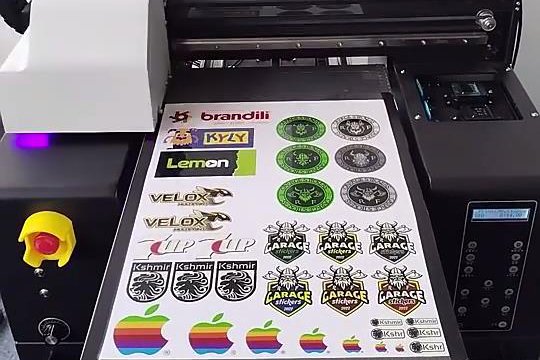UV flatbed printers have become increasingly popular in recent years due to their exceptional versatility and ability to print on a wide range of substrates. Among these printers, the A3 UV printer stands out as a compact and affordable option for small businesses and entrepreneurs. In this article, we will explore the technical evolution of A3 UV printers, examining key advancements and their impact on the industry.

1. Early Development and Pioneering Efforts
The roots of A3 UV printer technology can be traced back to the early 2000s, when manufacturers began experimenting with UV-curable inks and specialized flatbed printing systems. These early machines were often expensive and complex to operate, limiting their adoption to specialized applications. However, they laid the foundation for future advancements and set the stage for significant technological improvements.
2. Introduction of LED UV Curing Systems
A major breakthrough in A3 UV printer technology occurred with the introduction of LED UV curing systems. LED UV lamps offer several advantages over traditional mercury vapor lamps, including lower energy consumption, longer lifespan, and reduced heat generation. This allowed for faster curing times, improved print quality, and a wider range of compatible substrates.
3. Enhanced Print Quality and Resolution
The development of high-resolution print heads and advanced ink formulations significantly contributed to the improvement of print quality in A3 UV printers. Print heads with higher nozzle densities and smaller droplet sizes enabled sharper images and smoother gradients. Advanced UV inks with improved adhesion and color vibrancy further enhanced the overall print quality.
4. Increased Speed and Efficiency
As technology progressed, A3 UV printers became faster and more efficient. This was achieved through optimizations in print algorithms, hardware improvements, and the introduction of multiple print heads. Dual-head and quad-head configurations allowed for increased productivity and reduced production times, making A3 UV printers more competitive in high-volume printing environments.
5. Broader Substrate Compatibility
A key advantage of A3 UV printers is their ability to print on a diverse range of materials. This versatility is attributed to the unique properties of UV inks, which cure instantly upon exposure to UV light. This allows for printing on non-porous and sensitive substrates such as acrylic, glass, metal, wood, and even fabric.
6. Cost-Effective and User-Friendly Solutions
The cost of A3
UV printers has decreased significantly over the years, making them more accessible to small businesses and entrepreneurs. Additionally, advancements in user interfaces and software have simplified the operation and maintenance of these printers, making them easier to use for individuals with limited technical expertise.
7. Environmental and Sustainability Considerations
The use of UV-curable inks in A3 UV printers eliminates the need for solvents, reducing the environmental impact of the printing process. UV inks also emit fewer volatile organic compounds (VOCs), contributing to a healthier and safer working environment.
The evolution of A3 UV printer technology has been characterized by continuous advancements in print quality, speed, efficiency, substrate compatibility, affordability, and environmental sustainability. These advancements have made A3 UV printers a versatile and accessible solution for a wide range of printing applications. As technology continues to progress, we can expect even more innovative and groundbreaking developments in the field of A3 UV printing.
